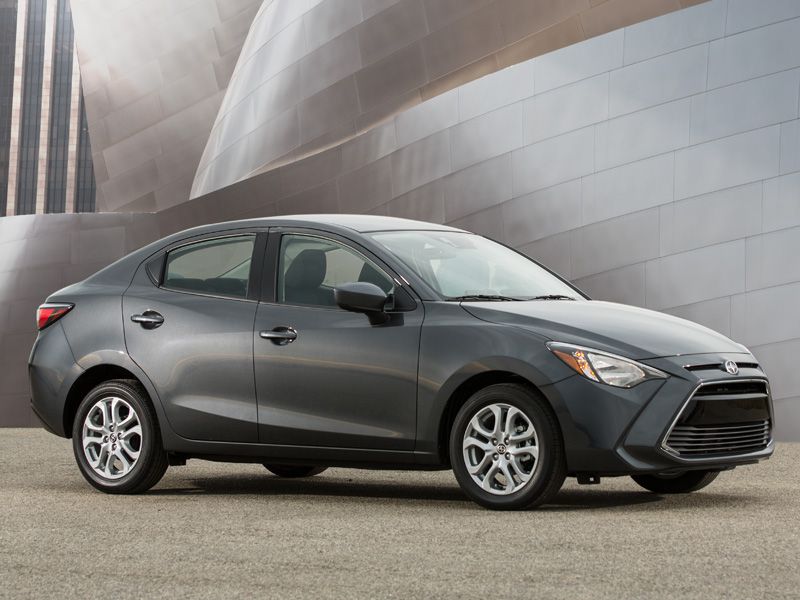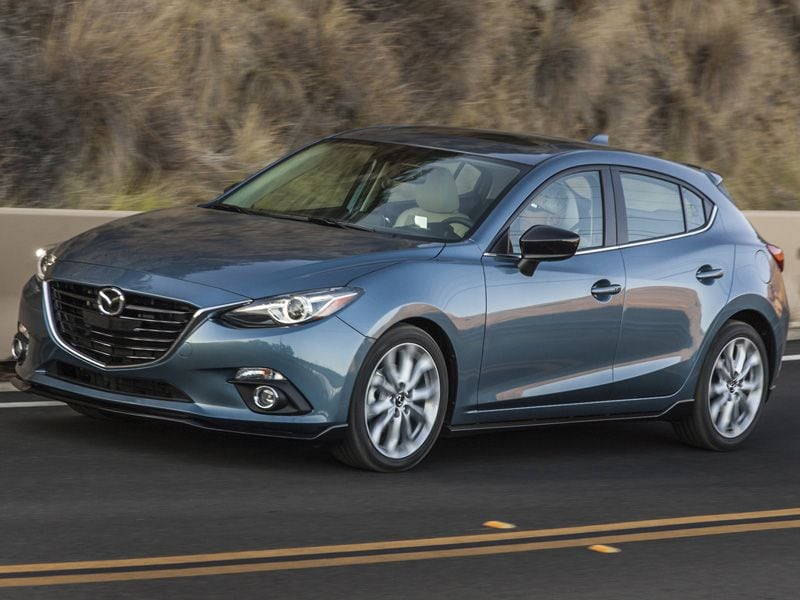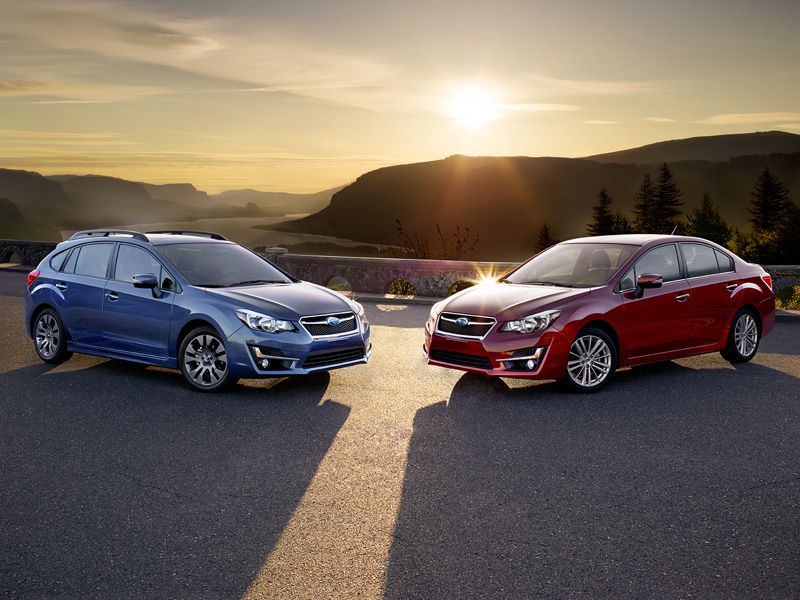Recent Articles
Popular Makes
Body Types
The 11 Safest Small Cars for 2016

ABTL Safest Small Cars Lede Option 2
Vehicle size and weight are significant factors contributing to your ability to survive in a collision. “All other things being equal,” says the Insurance Institute for Highway Safety (IIHS), “occupants in a bigger, heavier vehicle are better protected than those in a smaller, lighter vehicle.”
That’s good advice. But here’s the problem: smaller and lighter vehicles tend to be more affordable and fuel efficient, and not everybody can afford to go and lease a gas-guzzling Cadillac Escalade.
If safety is of the greatest importance to you, buy the largest and heaviest vehicle you can afford, whether it is new or used.
If, however, you’re like me and you prefer to drive a smaller and more nimble car, these are the 11 models that are likely to best protect you in a collision*. They’re listed in order of their base curb weights with an automatic transmission, from the lightest to the heaviest model.
* As of February 1, 2016. Base prices include an automatic transmission. Fuel economy reflects the combined EPA rating for the base engine and automatic transmission.
2016 Scion iA
A new entry-level sedan, the Scion iA is actually a restyled Mazda Mazda2. Mazda redesigned the Mazda2 for 2016, but elected not to bring it to the U.S. market as a Mazda. That’s how it wound up in Scion showrooms with its odd gape-mouthed grille.
Like all Mazda products, the Scion iA is entertaining to drive and equipped with higher quality interior materials than might be expected. Standard safety equipment includes a reversing camera and a low-speed forward collision warning system with automatic emergency braking. Including those two latter features as standard is almost unheard of in a car that is sized and priced like the Scion iA.
- Curb Weight: 2,416 lbs.
- Base Price: $17,595
- NHTSA Rating: Not rated
- IIHS Rating: Top Safety Pick+
- Fuel Economy: 37 mpg

Photo by Scion
2016 Chevrolet Sonic
Of the 11 cars on this list, only the Chevrolet Sonic receives a 5-star rating in each individual crash-test assessment conducted by the federal government. This, combined with a Top Safety Pick rating from the IIHS and the lowest base price of any car included in this article, makes the Sonic compelling.
Available as a 4-door sedan or a 5-door hatchback with up to 47.7 cu.-ft. of cargo space, the Sonic is equipped with 10 standard airbags and OnStar subscription services with six free months of automatic collision notification. Options include a reversing camera, a forward collision warning system, and a lane departure warning system. Automatic emergency braking is not offered for this model.
- Curb Weight: 2,720 lbs.
- Base Price: $16,470
- NHTSA Rating: 5 stars overall
- IIHS Rating: Top Safety Pick
- Fuel Economy: 28 mpg

Photo by Chevrolet
2016 Honda Civic
Honda’s redesigned 2016 Civic sedan is an impressive car, built around the automaker’s latest Advanced Compatibility Engineering (ACE) body structure and equipped with a standard reversing camera. This, however, is not the impressive part.
With the 2016 Civic, Honda sets a new standard for the auto industry by democratizing high-tech safety equipment across all trim levels. Usually, in order to get collision avoidance systems like forward collision warning and automatic emergency braking, car buyers must upgrade to the highest trim level, and then frequently must pay extra for an option package containing it. Honda offers these features for the base LX model, packaged together with lane departure warning, lane keeping assist, and road departure prevention systems, and for just $1,000.
Bravo, Honda! Now, if you’d just get rid of LaneWatch and replace it with a traditional blind spot warning system with rear cross-traffic alert, you’d be firing on all cylinders.
- Curb Weight: 2,751 lbs.
- Base Price: $20,275
- NHTSA Rating: Not tested
- IIHS Rating: Top Safety Pick+
- Fuel Economy: 35 mpg

Photo by Honda
2016 Kia Soul
Kia characterizes the funky 5-door Soul multi-purpose vehicle as a crossover, but without an optional all-wheel-drive system, it isn’t one. It is practical, though, offering up to 49.5 cu.-ft. of space.
Safety features are optional for this model, and they include a reversing camera, a lane departure warning system, and a forward collision warning system. Unfortunately, a blind spot warning system, rear cross-traffic alert, and automatic emergency braking are missing from the menu of extras.
Kia makes up for these omissions by offering connected services technology without a subscription, including automatic collision notification, which speeds rescuers to the scene even if you can’t make the call yourself.
- Curb Weight: 2,784 lbs.
- Base Price: $18,150
- NHTSA Rating: 5 stars overall
- IIHS Rating: Top Safety Pick
- Fuel Economy: 26 mpg

Photo by Kia
2016 Nissan Sentra
With a substantial refresh for the 2016 model year, the Nissan Sentra is safer than ever. Options include a reversing camera, a blind spot warning system with rear cross-traffic alert, and a forward collision warning system with automatic emergency braking. An Easy Fill Tire Alert system is also offered for the Sentra, making it super easy to keep the tires inflated to a proper pressure.
New for 2016, NissanConnect Services supplies automatic collision notification as well as teen driver monitoring features including curfew alert, speed alert, boundary alert, and a car finder. Any parent can appreciate those, as well as the fact that the Sentra isn’t a terribly powerful car to start with.
- Curb Weight: 2,857 lbs.
- Base Price: $18,465
- NHTSA Rating: 4 stars overall
- IIHS Rating: Top Safety Pick
- Fuel Economy: 32 mpg

Photo by Nissan
2016 Mazda Mazda3
Suave and sophisticated, the Mazda Mazda3 is offered as a 4-door sedan or a 5-door hatchback with up to 47.1 cu.-ft. of cargo space. Standard safety features include a reversing camera and subscription-free access to automatic collision notification technology.
Options include a forward collision warning system and low-speed automatic emergency braking system, a lane departure warning system, and a blind spot warning system with rear cross-traffic alert. Automatic high-beam headlights and adaptive headlights that help the driver to see around dark corners are also offered for the fun-to-drive Mazda3.
- Curb Weight: 2,930 lbs.
- Base Price: $19,715
- NHTSA Rating: 5 stars overall
- IIHS Rating: Top Safety Pick+
- Fuel Economy: 34 mpg

Photo by Mazda USA
2016 Volkswagen Golf
A hatchback model providing up to 52.7 cu.-ft. of cargo space, the Volkswagen Golf is offered in 2-door and 4-door body styles.
For 2016, automatic post-collision braking is a standard feature, designed to bring the car to a halt as soon as is possible following an accident. Options include a reversing camera, a blind spot warning system with rear cross-traffic alert, a lane departure warning system, and forward collision warning with automatic emergency braking.
Additionally, Volkswagen’s Car-Net subscription services system provides automatic collision notification as well as Family Guardian features such as speed and geographic boundary alerts.
- Curb Weight: 2,961 lbs.
- Base Price: $20,415
- NHTSA Rating: 5 stars overall (2-door)
- IIHS Rating: Top Safety Pick+ (4-door)
- Fuel Economy: 29 mpg

2016 Volkswagen Jetta
Once upon a time, the Volkswagen Golf and Volkswagen Jetta shared a common platform and components. Today, that’s no longer true. But, the Jetta is offered with nearly the same list of available safety features as the Golf.
Automatic post-collision braking is a new standard feature for 2016, and the Jetta can be optioned with a reversing camera, a blind spot warning system with rear cross-traffic alert, and a forward collision warning system with automatic emergency braking. Car-Net subscription service with automatic collision notification is also available, along with speed and geographic boundary alerts.
- Curb Weight: 3,025 lbs.
- Base Price: $19,600
- NHTSA Rating: 4 stars overall
- IIHS Rating: Top Safety Pick+
- Fuel Economy: 32 mpg

Photo by Volkswagen
2016 Subaru Impreza
If you need a small, safe car with weather-beating all-wheel-drive, the Subaru Impreza is your only choice. It comes in 4-door sedan and 5-door hatchback flavors, the latter featuring as much as 52.5 cu.-ft. of cargo space. All Imprezas include a standard reversing camera.
Optional safety equipment includes Starlink subscription services with automatic collision notification. An EyeSight package of driver assistance technologies contains steering responsive fog lights, lane departure warning with lane keeping assist, and forward collision warning with automatic emergency braking systems.
- Curb Weight: 3,032 lbs.
- Base Price: $20,090
- NHTSA Rating: 5 stars overall
- IIHS Rating: Top Safety Pick+
- Fuel Economy: 31 mpg

2016 Acura ILX
Acura’s entry-level ILX is a safe little sedan, and when equipped with the AcuraWatch Plus option package it includes forward collision warning with automatic emergency braking, lane departure warning with lane keeping assist, and a road departure mitigation system designed to prevent the car from unintentionally driving off of the pavement.
A reversing camera is standard, while additional options include a blind spot warning system with rear cross-traffic alert and AcuraLink subscription services with automatic collision notification.
- Curb Weight: 3,093 lbs.
- Base Price: $28,840
- NHTSA Rating: 5 stars overall
- IIHS Rating: Top Safety Pick+
- Fuel Economy: 29 mpg

Photo by Acura